- Overview
- Info & Inclusions
- Itinerary
- Map & Hotels
- Photos
- Dates & Prices
- Max Group Size 18
- Torun, home of Copernicus
- Warsaw: Old Town tour
- Vibrant Gdansk
- Well-preserved Krakow
- Wieliczka salt mines tour
- Vilnius walking tour
- Hill of Crosses: compelling memorial
- Cosmopolitan Riga
- Tallinn: one of Europe's best preserved old towns
- Stately Stockholm
- Norway-in-a-Nutshell: scenic rail journey
- Singles friendly (view options for single travellers)
We'll then venture north, exploring the captivating Baltic States – Estonia, Latvia, and Lithuania. Discover medieval towns, UNESCO World Heritage Sites, and the unique cultural tapestry woven by these independent nations.
Our journey continues to Scandinavia, where we'll experience the charm of Helsinki, Copenhagen, Stockholm, Oslo and Bergen – each city offering a distinct blend of modern architecture, vibrant culture, and a relaxed Scandinavian lifestyle.
- Full-time Tour Leader services & local guides at several locations.
- Breakfast and most dinners (hotels & local restaurants) daily (see detailed itinerary)
- All transport, accommodation, sightseeing and entrance fees for sites noted as 'visited' in the detailed itinerary.
- Gratuities for local guides, drivers, restaurant staff, porters.
- Airport transfers for land & air customers and for early arriving / late departing land & air customers who book their extra hotel nights through us.
- International airfare to/from the tour.
- Tour Leader gratuities, lunches, drinks, personal items (phone, laundry, etc), international air taxes (if applicable), excursions referenced as 'optional'.
- Airport transfers for Land Only customers.
- Optional travel insurance (click on "resources" tab for details)International airfare to/from the tour.
- Tour Leader gratuities, lunches, drinks, personal items (phone, laundry, etc), international air taxes (if applicable), excursions referenced as 'optional'.
- Airport transfers for Land Only customers.
- Optional travel insurance (click on "resources" tab for details)
- Seasonality and Weather:
Central and Northern Europe, encompassing Poland, the Baltic States (Lithuania, Latvia, and Estonia), and the Nordic countries (Denmark, Finland, Iceland, Norway, and Sweden), experiences a cool climate with distinct seasons.
Mid-May to June:
Poland: This is a fantastic time to visit Poland. The weather is generally pleasant, making it ideal for exploring cities like Warsaw and Krakow, hiking in the Tatra Mountains, or visiting historical sites. You can expect comfortable daytime temperatures and pleasant evenings.
Baltic States: May offers a delightful spring experience in the Baltic States. The weather is mild, with occasional rain showers. This is a great time for exploring the charming old towns of Tallinn, Riga, and Vilnius, enjoying outdoor cafes, and taking day trips to the countryside.
Nordic Countries: In mid-May, the Nordic countries are coming to life after the winter. Days are getting longer, and the landscape is blooming. Southern regions offer pleasant weather for exploring cities like Copenhagen and Stockholm, while northern areas might still have some snow lingering. This is a good time for hiking and experiencing the unique Nordic atmosphere.
Late August/September:
Poland: Late August and September offer comfortable weather for exploring Poland. The temperatures are still warm, making it pleasant for outdoor activities. This is a shoulder season, so you might encounter fewer crowds and potentially lower prices on accommodation and flights.
Baltic States: September in the Baltic States can be quite pleasant. The weather is starting to cool down, but it's still warm enough for enjoying the outdoors. This is a good time for hiking in the countryside, visiting charming coastal towns, and experiencing the unique Baltic Sea atmosphere.
Nordic Countries: In late August and September, the Nordic countries experience the "Indian Summer," a period of warm and sunny weather. This is a beautiful time to witness the changing colours of autumn foliage. Southern regions offer pleasant temperatures for outdoor activities. - Transport and Travel Conditions:
Land transport throughout by private air-conditioned motor coach, ultimate size depending on group size (see 'group size'). Though we will have a couple of full bus days there are plenty of stops of interest.
This trip is typical of most of our European tours, which are ambitious and involve full days of travel and sightseeing. While we don't have any actual strenuous activity (ie hiking) built into the program, you will do a lot of walking on this trip. These walks will mostly be in the form of walking tours of towns and cities and short walks to dinner. Being Europe, and a hilly/mountainous area, cobbles, uneven surfaces, and slopes/stairs are common. If you are accustomed to typical "bus tours," which rely heavily on vehicular transport for all sightseeing activities, you should be aware that this tour is considerably more active.
For information on our overnight ferries, see "Accommodation."
If you are unsure of your suitability for this trip, please contact one of our destination specialists.
Am I suitable for this tour? Please refer to our self-assessment form - Activity Level: 2
These are particularly busy tours that feature a lot of moving around, sometimes by train and short journeys on local transport. Walking tours of towns and cities are leisurely but you should be prepared to be on your feet for several hours. Some of our cultural trips that occur at high altitude and/or require greater independence with baggage handling (at hotels, airports, train stations) also fall into this category.
To learn more about the Activity levels, please visit our tour styles page. - Accommodation:
Well-located, air-conditioned, mid-range hotels (3-4 star) throughout. Porter service is usually available though you must be independent with your luggage. Single rooms are limited in number and likely smaller than twins.
Our overnight ferries feature cozy cabins with low beds (ie not bunks) and en-suite washroom. For information see "Map & Hotels" tab. - Staff and Support:
Tour Leader throughout, drivers, local step-on guides in various locales. - Group Size:
Maximum 18 (plus Tour Leader)
- Day 1:Arrive in KrakowWelcome to Poland, where over a thousand years of tumultuous history have forged one of Europe's most resilient cultures. Today we arrive in Krakow, a city that served as Poland's royal capital for over five centuries before Warsaw claimed the crown in 1596. Nearly 100 churches pierce the skyline of this enchanting medieval city, their spires rising above cobblestone squares that have witnessed coronations, invasions, and the quiet persistence of Polish identity through centuries of occupation.
Tonight we gather with our fellow travellers for our first dinner together, settling into the old-world charm that has made Krakow one of Europe's most beloved destinations.
Overnight in Krakow.
Included Meal(s): Dinner, if required - Day 2:Krakow: City Walking TourWe begin atop Wawel Hill, where the Royal Castle commands sweeping views over the Vistula River. This limestone outcrop has witnessed Poland's most pivotal moments—from coronations to royal funerals, from Renaissance splendour to Nazi occupation. Our exploration unfolds largely on foot through Krakow's compact, well-preserved centre, where cobblestone streets connect architectural treasures within comfortable walking distances.
Descending into the heart of the Old Town, we enter Europe's largest medieval market square—the magnificent Rynek Glowny, where merchants have traded for over 700 years. The haunting trumpet call echoes from St. Mary's Church towers above us, a tradition dating to the 13th century when a trumpeter's warning saved the city from Mongol invasion. Inside, we marvel at the Wit Stwosz altar, carved in 1489 by the master craftsman from Nuremberg—Poland's finest sculptural masterpiece.
Our journey continues through cobblestone streets to Jagiellonian University, one of Europe's oldest institutions, where Copernicus once studied the stars that would revolutionize our understanding of the universe. We conclude in Kazimierz, the former Jewish Quarter that has transformed from medieval independent town to vibrant cultural district, where centuries of Jewish heritage blend with contemporary cafe culture.
Overnight in Krakow.
Included Meal(s): Breakfast and Dinner - Day 3:Oskar Schindler Museum & Wieliczka Salt MinesThis morning we visit the Oskar Schindler Factory Museum, where individual histories of Krakow's wartime inhabitants guide us through exhibits covering the war of 1939, everyday life under occupation, the fate of the Jews, and the city's underground resistance. The story of Oskar Schindler and his employees—made famous by Thomas Keneally's book and Steven Spielberg's film, shot almost entirely in Krakow—unfolds through archival documents, photos, radio recordings, and multimedia presentations.
After a break for lunch featuring Polish specialties, we embark on a truly unique adventure: a descent into the Wieliczka Salt Mines. Prepare to journey 5 kilometres (3.1 miles) beneath the earth's surface, exploring a world sculpted entirely by salt. We wander through a labyrinth of salt-formed caves and grottoes, each with its own character and charm. A mesmerizing subterranean lake reflects the glow of mine lamps, while the most awe-inspiring sight awaits—a chapel adorned with intricate sculptures, all carved entirely from surrounding salt.
The scale of this operation staggers the imagination: 11 levels of galleries stretching an incredible 300 kilometres (186 miles) in total. Over 700 years of continuous mining have yielded a staggering 20 million tonnes of rock salt. Local legend tells of Princess Kinga, a Hungarian princess whose lost ring was miraculously found within a block of salt mined here in the 13th century—said to be the very origin of the mines themselves.
Because of the fullness of our day, and because past travellers indicated a desire for some independence while in Krakow, we include a light lunch instead of dinner today.
Overnight in Krakow.
Included Meal(s): Breakfast and Lunch - Day 4:Krakow - Oswiecim (Auschwitz) - Czestochowa - LodzOur journey takes a solemn turn as we arrive at Oswiecim and Birkenau, where preserved barracks and railway ramps bear witness to humanity's darkest chapter. Here, 1.5 million souls from 28 nations perished, their stories now preserved as an eternal reminder of the importance of tolerance and human dignity. Our guide shares personal testimonies that transform statistics into human faces, ensuring these voices are never forgotten.
From this profound experience, we travel to Poland's spiritual heart—Czestochowa and the Jasna Gora Monastery. Within these sacred walls resides the Black Madonna, Poland's most venerated icon, believed painted by St. Luke himself and brought from Jerusalem in 1384. Pilgrims have journeyed here for centuries, drawn by the mysterious power of this darkened image that has survived Swedish invasions and Nazi occupation.
Our day concludes in Lodz (pronounced "Wooj"), the city that rose from humble village to Europe's textile powerhouse in just one century. Once known as "the promised land" and "city of many cultures," this multicultural marvel welcomed Germans, Russians, and Jews who together wove the fabric of industrial prosperity. Tonight we discover how this diversity created one of Europe's most fascinating urban tapestries.
Overnight in Lodz.
Included Meal(s): Breakfast and Dinner - Day 5:Lodz - Warsaw: City TourToday we continue to Warsaw, a city that rises before us like a phoenix from ashes—refusing to surrender its soul to destruction. After being systematically razed during World War II, Warsaw's citizens embarked on one of history's most remarkable reconstruction projects, rebuilding their beloved Old Town brick by brick, using paintings and photographs as their guide. Today's UNESCO-protected historic centre stands as testimony to Polish determination and cultural pride.
We begin along the elegant Royal Route, where kings once processed to their coronations, then dive into the meticulously restored Old Town. Castle Square pulses with life while the Uprising Monument honours the heroes of 1944. Crossing the Vistula River to the Praga district, we gain panoramic views of this resilient capital that has shed its Soviet-era persona to emerge as Central Europe's dynamic business hub.
In the former Jewish Ghetto area, we visit the poignant Umschlagplatz memorial before exploring the Museum of the History of Polish Jews. Through innovative multimedia exhibitions, we discover the thousand-year story of Poland's Jewish community—once Europe's largest—whose vibrant culture flourished here before the Holocaust forever changed this landscape.
Overnight in Warsaw.
Included Meal(s): Breakfast and Dinner - Day 6:Warsaw Sightseeing - To TorunThe morning begins at the Warsaw Uprising Museum, housed in a former tram power station where artifacts tell the story of the city's 1944 rebellion. Love letters, weapons, and personal belongings of the insurgents create an intimate portrait of ordinary citizens who chose extraordinary courage. These exhibits reveal how 200,000 Warsaw residents fought for freedom during 63 days that would define their city's character forever.
Leaving Warsaw's complex history behind, we journey north to medieval Torun, a UNESCO World Heritage gem that time forgot to destroy. Nestled on the Vistula River's banks, this enchanting city miraculously escaped World War II bombing, preserving its Gothic architecture in pristine condition. The warm glow of red-brick buildings reflects centuries of Hanseatic League prosperity, when merchants from across Northern Europe gathered in these cobblestone squares.
As evening approaches, Torun's outdoor cafes come alive with the aroma of local delicacies. The majestic St. Mary's Church towers above us, its bells calling across centuries of Polish history while we settle into the timeless rhythm of medieval life.
Overnight in Torun.
Included Meal(s): Breakfast and Dinner - Day 7:Torun: Nicolaus Copernicus Museum - GdanskWe begin in the very house where Nicolaus Copernicus was born in 1473, the man who revolutionized our understanding of the universe. The museum's collection of rare astronomical instruments, ancient star charts, and original manuscripts reveals how this Polish genius challenged centuries of accepted wisdom. Standing in his birthplace, we appreciate how medieval Torun nurtured the mind that would prove Earth revolves around the Sun.
The imposing 13th-century Town Hall dominates our morning explorations—one of Northern Europe's most magnificent civic buildings. Its Gothic towers have overseen seven centuries of commerce and culture, while surrounding streets preserve the medieval urban planning that made Torun a Hanseatic League powerhouse.
Our journey continues to Gdansk, the "Maritime Pearl of Poland," where narrow, peaked-roof buildings create one of Europe's most photogenic skylines. This Baltic port city carries the weight of momentous history—World War II began with disputes over Gdansk's control, while decades later, Lech Walesa's Solidarity movement launched from its famous shipyards. Tonight we stroll the iconic Dluga Street, past Neptune's Fountain and into St. Mary's Church, one of the world's largest brick churches, as Baltic sea breezes carry stories of merchants, warriors, and revolutionaries.
Overnight in Gdansk.
Included Meal(s): Breakfast and Dinner - Day 8:Gdansk Area TourGdansk's strategic Baltic position has made it one of Northern Europe's most coveted ports for centuries, a blessing that became a curse when competing powers tore the city apart. By 1945, the German population had fled and Polish settlers renamed the ruins "Gdansk," beginning the painstaking reconstruction we admire today. Though most buildings rose from rubble, master craftsmen ensured every Gothic detail matched the original splendour.
We venture to nearby Oliwa Cathedral, where Cistercian monks first built their shrine in the 13th century. Fire destroyed and transformed this sacred space multiple times—the Gothic interior gave way to magnificent Baroque fixtures after a devastating 1577 blaze. The cathedral's crowning glory awaits: a massive organ with over 7,000 pipes, decorated with movable angels and painted stars. When constructed, this instrument was Europe's largest, and today its thunderous voice still rivals any concert hall.
At the European Solidarity Centre, multimedia exhibits chronicle how electrician Lech Walesa sparked a movement that would topple communism across Eastern Europe. The story of Solidarity—from shipyard strikes to Nobel Peace Prizes—unfolds through personal testimonies and artifacts from this pivotal chapter in modern European history.
The afternoon belongs to you in this "Amber Capital of the World," where shops display fossilized treasures from the Baltic's ancient forests. In order to maximize your free time in this fascinating place, we do not include dinner this evening.
Overnight in Gdansk.
Included Meal(s): Breakfast - Day 9:Gdansk - Malbork - OlsztynOur morning begins with Europe's largest brick building—the magnificent Teutonic Knights Castle at Malbork. This 13th-century fortress stretches along the Nogat River like a medieval city unto itself, its towering walls and Gothic halls testament to the military might of the Crusading order. UNESCO protection ensures future generations will witness the architectural genius that once commanded the Baltic trade routes. Our two-hour guided tour reveals the massive scale of this complex, and afterwards we cross the footbridge for spectacular panoramic photographs of the entire structure.
As we continue southeast, Poland's landscape transforms into the pristine beauty of the Masurian Lake District. Rolling hills give way to sparkling waters and dense forests that have remained largely unchanged since the Ice Age carved this terrain. Olsztyn emerges like a fairy tale town, its medieval walls encircling narrow cobblestone streets where Gothic churches and Renaissance townhouses create perfect architectural harmony.
The fortified walls surrounding Olsztyn's old town whisper tales of Swedish invasions and Napoleonic campaigns, while cozy cafes and artisan shops invite us to experience the gentle rhythm of lake district life. Tonight we rest in this charming sanctuary where nature and history exist in perfect balance.
Overnight in Olsztyn.
Included Meal(s): Breakfast and Lunch - Day 10:Olsztyn - Olsztynek - WarsawOur final morning in the lake district begins with a walking tour through Olsztyn's medieval quarter, where we explore the Gothic cathedral and the castle where Nicolaus Copernicus once lived and worked as a canon and administrator. On the very walls of his chambers, you can still see the schematics he drew—astronomical calculations that helped him develop his revolutionary heliocentric theory, proving that Earth revolves around the Sun rather than the reverse.
We then journey to the Museum of Folk Architecture in Olsztynek, one of Europe's oldest and most comprehensive open-air museums. Wooden houses, rustic barns, and historic windmills transported from across the region create a living timeline of traditional Polish life. These structures, saved from demolition and lovingly restored, preserve centuries of craftsmanship and cultural memory. We explore the interiors of beautifully restored farmhouses, where traditional furniture and household items reveal the daily rhythms of rural Polish families. The evangelical church, blacksmith workshop, and pottery stands demonstrate how entire communities once functioned as self-sufficient units.
After lunch at the museum, we journey back through the Polish countryside toward Warsaw. Wooden windmills and thatched-roof villages dot the landscape like scenes from a living museum, reminders of a way of life that persists even as Poland embraces its European future. Tonight we return to the nation's dynamic capital carrying memories of traditions preserved and stories that span centuries.
Overnight in Warsaw.
Overnight in Warsaw.
Included Meal(s): Breakfast and Dinner - Day 11:Warsaw, Poland - Vilnius, LithuaniaToday we fly* from Warsaw to Vilnius and transfer to our hotel.
"Narrow cobblestone streets and an orgy of Baroque: almost like a Jesuit city somewhere in the middle of Latin America," wrote the author Czeslaw Milosz of pre-war Vilnius. Soviet-era satellite suburbs aside, it's a description which still rings true today. Despite being the capital of the medieval Lithuanian state, Vilnius was occupied by Poland between the wars and was inhabited mainly by Poles and Jews who played such a prominent role in the city's life that it was known as the "Northern Jerusalem". Vilnius is still a cosmopolitan place -- around twenty percent of its population is Polish and another twenty percent is Russian -- though with just 543,000 inhabitants it has an almost village-like atmosphere, making it an easy place to get to know.
* NOTE: Depending on final group size and flight schedules (which can be erratic), this journey may take place overland (by private bus). If so, we apologize for the backtracking and inconvenience.
Overnight in Vilnius. - Day 12:Vilnius: City TouringThis morning we explore Vilnius on foot, discovering the layers of history left by the city's various rulers—Sweden, Poland, France, and Russia have all governed here at different times. The Old Town, one of Europe's largest, contains nearly 1,500 historic buildings that create a rich architectural tapestry.
Our walking tour takes us to Cathedral Square in the city's heart. Inside the cathedral we see the chapel of Saint Kazimieras, an ornate example of early Baroque architecture. Behind Cathedral Square rises Gedimino Tower, remnant of the 14th-century defensive system that once protected the city. On the Old Town's eastern edge, the Gates of Dawn stand as the last of nine original city gates. From here we walk through the cobblestone lanes of the Jewish Quarter with its hidden courtyards.
The afternoon is free for independent exploration. A popular option is the self-proclaimed 'republic' of Uzupis, Vilnius's bohemian artistic district, or the KGB Museum (Museum of Genocide Victims). For Lithuanians, this museum symbolizes the 50-year Soviet occupation—the building remains as the KGB left it in 1991, with cells and interrogation rooms preserved intact.
Overnight in Vilnius.
Included Meal(s): Breakfast and Dinner - Day 13:Vilnius - Trakai - Kaunas - KlaipedaThis morning we depart Vilnius for Klaiprda, stopping first at Trakai, Lithuania's medieval capital. The town occupies a peninsula between several lakes, with two prominent castles built to defend against German knights in the 14th century. Our visit includes the Trakai Historical Museum, housed within the island castle's main rooms. Trakai is also known for its Karaim community, descendants of Turkic people brought here from Crimea by Grand Duke Vytautas in the late 14th century.
We continue to Kaunas, Lithuania's second-largest city, for a lunch break and brief exploration of the historic Old Town with its medieval buildings and market squares.
By late afternoon we reach Klaipeda, a port city on the Baltic Sea. After settling into our hotel, we take an evening stroll through the Old Town, where cobblestone streets wind between half-timbered houses. The architecture reflects the city's Germanic past—Klaipeda was known as Memel until 1923—and its evolution from medieval fortress to major trading port.
NOTE: Trakai Castle undergoes ongoing restoration work until 2027. Some areas may have limited access or scaffolding, though the site remains visitable. If circumstances make a visit impractical, we will substitute another point of interest in the region.
Overnight in Klaipeda.
Included Meal(s): Breakfast and Dinner - Day 14:Klaipeda & the Curonian SpitThis morning we take a ferry across the lagoon to Curonian Spit National Park, a UNESCO World Heritage site. This narrow, 98-kilometre sand peninsula separates the Curonian Lagoon from the Baltic Sea, shaped over millennia by wind, waves, and human intervention.
The spit's massive sand dunes—some reaching 60 metres in height—have buried entire villages over the centuries. At Juodkrantė we walk through the Hill of Witches sculpture trail, where wooden carvings depict characters from Lithuanian folklore. The village itself sits beneath forested dunes, its traditional fishermen's houses painted in distinctive colours.
The Russian border lies just beyond the spit's northern end at Nida. We learn about the region's amber industry—the Baltic coast has supplied this fossilized resin for thousands of years—with a visit to a local amber museum. The exhibits explain how amber forms, its historical trade routes, and its uses from ancient jewelry to modern applications.
We return to Klaipeda by ferry in late afternoon.
Overnight in Klaipeda.
Included Meal(s): Breakfast and Dinner - Day 15:Klaipeda - Hill of Crosses, Lithuania - Rundale Palace, Latvia - RigaLeaving the coast, we travel inland through the Lithuanian countryside to the Hill of Crosses near Siauliai. Thousands of crosses cover this modest rise, placed here over more than a century as symbols of Christian devotion and national resistance. The site became particularly significant during Soviet occupation, when authorities repeatedly removed the crosses only to see them replaced by persistent pilgrims. Today newlywed couples often visit to seek blessings for their marriage.
Crossing into Latvia, we continue to Rundale Palace, designed by Italian architect Francesco Bartolomeo Rastrelli, who also created St. Petersburg's Winter Palace. Completed in 1768, Rundale exemplifies Baroque architecture with classical influences. The palace interior features elaborate stucco work, crystal chandeliers, silk wallpapers, and frescoes by Italian artists. We tour the state rooms where Latvian officials received Denmark's royal couple in 2006, showcasing the palace's continued ceremonial role.
After the visit and a break for lunch, we proceed to Riga, Latvia's capital and the largest Baltic city.
Overnight in Riga.
Included Meal(s): Breakfast and Dinner - Day 16:Riga’s Old Town: Walking TourThis morning we explore Riga's Old Town on foot, discovering the city's architectural heritage and cultural landmarks. We begin at the Freedom Monument, erected in 1935 to honour those who fought for Latvian independence. The monument's bronze figure holds three stars representing Latvia's historical regions—Kurzeme, Vidzeme, and Latgale.
Walking through the Old Town, we pass the Latvian National Opera House and the Powder Tower, a remnant of the medieval city walls. Kalku Street leads us to Līvu Square, one of the Old Town's most animated corners. St. Peter's Church, dating to 1209, rises above the surrounding buildings—its 123-metre spire dominates Riga's skyline. The Three Brothers, a group of connected medieval houses, represent the city's oldest residential architecture, with each building from a different century showing the evolution of construction styles.
At Town Hall Square we see the House of the Blackheads, rebuilt after World War II destruction. The original 14th-century building served a guild of unmarried German merchants. The Swedish Gate, a small archway through what appears to be residential buildings, marks one entrance through the old city fortifications.
The afternoon is free to explore Riga independently.
Overnight in Riga.
Included Meal(s): Breakfast and Dinner - Day 17:Riga Touring ContinuedWe begin at Riga's Central Market, housed in five former Zeppelin hangars from World War I. The market ranks among Europe's largest, with vendors selling fresh produce, local cheeses, smoked fish, and traditional Latvian foods. The scale and variety offer insight into regional culinary traditions.
From the market we visit the Art Nouveau Museum, located in a restored apartment that recreates early 20th-century living spaces. Riga contains one of Europe's highest concentrations of Art Nouveau architecture—over 800 buildings feature the style's characteristic organic forms and decorative elements.
Our tour continues to the area where Riga's Jewish ghetto existed during World War II. The Ghetto Museum, largely an outdoor exhibition, documents this period through preserved structures and interpretive panels. A small green house illustrates the cramped conditions families endured.
We visit the Academy of Sciences observation deck for panoramic views across Riga's skyline, taking in the city's mix of medieval spires, Art Nouveau facades, and Soviet-era buildings. After descending, we head to the Lido Leisure Centre for lunch—a casual spot popular with locals serving traditional Latvian dishes.
This afternoon we visit the Ethnographic Open-Air Museum, where historic farmsteads, windmills, and churches from across Latvia have been relocated and preserved. The exhibits illustrate rural Latvian life from the 17th through early 20th centuries.
Overnight in Riga.
Included Meal(s): Breakfast and Dinner - Day 18:Riga - Ligatne - Cesis, Latvia - Tallinn, EstoniaThis morning we depart Riga and travel north toward Estonia, stopping first at Sigulda in the Gauja River valley. Known as "Latvian Switzerland" for its forested hills and river gorge, the area contains several medieval castles. We visit the ruins of Turaida Castle, built by the Bishop of Riga in 1214, which offers views across the valley from its restored brick tower.
Continuing north, we reach Cēsis, a medieval market town with origins in the 13th century. The cobblestone streets wind between timber-framed houses and the imposing ruins of Cēsis Castle. The castle, constructed by the Livonian Order of knights, played a central role in the region's medieval history. We have time for lunch and a walk through the compact Old Town.
By late afternoon we cross into Estonia and proceed to Tallinn, the capital. The city's Old Town, remarkably preserved despite numerous invasions and fires over eight centuries, gained UNESCO World Heritage status in 1997. Its medieval walls, towers, and merchant houses remain largely intact, creating one of Europe's best-preserved historic quarters.
Overnight in Tallinn.
Included Meal(s): Breakfast and Dinner - Day 19:Tallinn Morning Walking Tour & Leisure TimeThis morning we explore Tallinn's Old Town on foot, beginning on Vene Street at the Alexander Nevsky Cathedral. This Russian Orthodox cathedral, built in 1900 during the Russian Empire's final decades, features distinctive onion domes and an ornate interior with icons and mosaics.
We continue to Toompea Hill, where Tallinn Castle has stood since the 13th century. The pink Baroque facade visible today was added in the 18th century; the castle now houses Estonia's parliament. Nearby, Toomkirik (Tallinn Cathedral) dates to 1233 and contains carved coats of arms of Baltic-German nobility who once dominated the region's aristocracy.
Descending to the Lower Town, we pass the Town Hall, completed in 1404 and the only surviving Gothic town hall in Northern Europe. The Town Hall Square has served as Tallinn's commercial and social centre for 800 years. We visit the Holy Spirit Church with its 14th-century clock, one of Europe's oldest public timepieces still functioning.
At the medieval Town Hall Pharmacy, one of Europe's oldest continuously operating pharmacies since at least 1422, we see displays of historical medical instruments and remedies. We also visit the Marzipan Museum, where Tallinn's confectionery traditions are explained—the city claims to have invented marzipan, though Germany disputes this.
The afternoon is free to explore independently. The Old Town's narrow lanes invite wandering, or you might visit Kadriorg Park with its Baroque palace built by Peter the Great.
Overnight in Tallinn.
Included Meal(s): Breakfast and Dinner - Day 20:Tallinn, Estonia - Helsinki, FinlandThis morning we board the ferry from Tallinn to Helsinki, a two-hour journey across the Gulf of Finland. Have your passports ready for border formalities.
Helsinki occupies a peninsula at the head of a large bay, surrounded by an archipelago of 315 islands. The city's location between Stockholm and St. Petersburg shaped its development as a strategic trading port. Founded by Sweden's King Gustav Vasa in 1550 as Helsingfors (the name still used in Swedish), the settlement remained modest until Russia conquered Finland in 1809 and made Helsinki the capital of the new Grand Duchy in 1812.
Upon arrival we begin a walking orientation tour of central Helsinki, getting our bearings in this compact, walkable city.
Overnight in Helsinki.
Included Meal(s): Breakfast and Dinner - Day 21:Helsinki: City TourThis morning we explore Helsinki's central districts on foot. The walking tour takes us through the historic centre and diplomatic quarter, past the Presidential Palace, City Hall, and Parliament building. At Senate Square we see the Lutheran Cathedral, designed by Carl Ludvig Engel in the 1830s. The square's neoclassical buildings—all by Engel—represent Russia's effort to create an impressive capital for Finland after 1812.
We visit Temppeliaukio Church, a striking modern structure built directly into solid rock in 1969. The church's dome consists of copper and glass, allowing natural light to illuminate the rough-hewn stone walls. The space doubles as a concert hall, its acoustics enhanced by the natural rock surfaces.
The afternoon is free for independent exploration. Helsinki's compact size makes it easy to navigate on foot. The harbour market operates daily, selling fresh produce, fish, and handicrafts. Those interested in modern architecture might visit the Oodi Helsinki Library, completed in 2018. The building occupies a prominent site facing Parliament, with a large public terrace on its roof offering views across the city.
Overnight in Helsinki.
Included Meal(s): Breakfast and Dinner - Day 22:Free time in Helsinki / Ferry to SwedenThe morning is free to explore Helsinki independently. A popular option is the ferry to Suomenlinna, a sea fortress built across six islands starting in 1748 when Finland was part of Sweden. The fortress represents an outstanding example of 18th-century military architecture and is a UNESCO World Heritage site. The ferry departs from the Market Square every 15-20 minutes and takes about 15 minutes. Suomenlinna is best explored on foot at your own pace—your Tour Leader will provide directions during yesterday's tour.
This afternoon we board our overnight ferry to Stockholm. The vessels on this route feature restaurants, duty-free shops, and entertainment facilities. Our cabins have low beds (not bunks) and ensuite washrooms. Dinner is served on board as we cruise through the Stockholm archipelago.
Overnight ferry.
Included Meal(s): Breakfast and Dinner - Day 23:Stockholm: Old Town & Vasa MuseumAfter our morning arrival in Stockholm, we check into our hotel (or put our luggage in storage) and have a break before beginning our afternoon walking tour.
Stockholm occupies 14 islands where Lake Mälaren meets the Baltic Sea. Three islands—Riddarholmen, Staden, and Helgeandsholmen—form the Old Town, a concentration of 17th and 18th-century buildings fronting narrow medieval lanes.
We begin at Stockholm City Hall, completed in 1923. The building has hosted the Nobel Prize banquet since 1930. Our guided tour includes the Blue Hall, where the banquet takes place, and the Golden Hall with its 18 million gold-mosaic tiles depicting Swedish history.
Crossing to Gamla Stan (Old Town), we walk the cobblestone streets between buildings painted in ochre, rust, and gold tones. The Royal Palace, one of Europe's largest with over 600 rooms, dominates the waterfront. We pass St. Nicholas Church (Storkyrkan), Stockholm's oldest church from the 13th century, and Riddarholm Church, where Swedish monarchs have been buried since the 16th century. At Stortorget, the Old Town's main square, the Nobel Museum occupies the former stock exchange building.
From Gamla Stan we take a short ferry to Djurgarden island for the Vasa Museum. The museum houses a 17th-century warship that sank on its maiden voyage in Stockholm harbour in 1628. Salvaged in 1961 after 333 years underwater, the Vasa is the world's only preserved 17th-century ship. The vessel stands 69 metres tall in the museum's purpose-built hall, its carved decorations and original paint remarkably preserved. Exhibits explain the ship's construction, its catastrophic sinking, and the salvage operation.
After our visit, we return to the hotel by public transport.
Overnight in Stockholm.
Included Meal(s): Breakfast and Dinner - Day 24:Stockholm: Boat Tour & Leisure TimeThis morning we board a boat for a 50-minute tour through Stockholm's waterways. Departing near City Hall, the cruise winds through the channels between islands, offering views of the city from the water. We pass Kungsholmen island with its waterfront promenades, and the smaller islands of Langholmen and Reimersholme. The guide explains Stockholm's development from a 13th-century settlement controlling trade routes between Lake Malaren and the Baltic, to its current status as Sweden's capital and largest city.
The afternoon is free to explore Stockholm independently. The Old Town rewards further wandering, with shops, cafes, and galleries tucked along its lanes. Djurgarden island contains several museums and extensive parkland. The Kungstradgarden, a popular city park, often hosts outdoor events and concerts during summer.
Overnight in Stockholm.
Included Meal(s): Breakfast and Dinner - Day 25:Stockholm, Sweden - Fly to Copenhagen, DenmarkThis morning we fly to Copenhagen, Denmark's capital. After arriving and checking into our hotel, we begin exploring the city.
We start with a one-hour canal cruise that provides an overview of Copenhagen's layout and landmarks. The boat glides through the historic harbour, past Amalienborg Palace where the Danish royal family resides, and Christiansborg Palace, which houses Denmark's parliament. The canals also reveal Copenhagen's maritime heritage—the city has been an important Baltic trading port since medieval times. We pass the Little Mermaid statue, created in 1913 and inspired by Hans Christian Andersen's fairy tale, sitting on a rock at the harbour entrance.
Overnight in Copenhagen.
Included Meal(s): Breakfast and Dinner - Day 26:Copenhagen: City TouringThis morning we walk through Copenhagen's historic centre, beginning at Nyhavn. This canal-side district, lined with 17th-century townhouses painted in bright colours, once served as the city's main commercial harbour. Hans Christian Andersen lived in several of these houses during his years in Copenhagen—you can visit the museum dedicated to his life during free time.
From Nyhavn we walk to Amalienborg Palace, the royal family's winter residence. Four identical Rococo palaces face an octagonal courtyard, completed in the 1750s as mansions for noble families before becoming the royal residence after Christiansborg Palace burned in 1794.
We continue to Rosenborg Castle, built by King Christian IV in the early 17th century as a summer residence. The castle now houses the Danish crown jewels and royal regalia, including the crown used at coronations since 1671. The surrounding King's Garden provides a green space in the city centre, popular with locals during warm weather.
The afternoon is free. Copenhagen's National Museum, located in a former palace, contains extensive collections on Danish history and ethnography. The museum is free to enter and makes an excellent rainy-day option.
NOTE: The sequence of Copenhagen sightseeing may vary depending on weather, hotel location, and logistical considerations.
Overnight in Copenhagen.
Included Meal(s): Breakfast and Dinner - Day 27:Copenhagen: City Tour - Overnight Ferry to OsloThis morning we visit Christiansborg Palace, which houses Denmark's parliament, prime minister's office, and Supreme Court. The current palace, completed in 1928, stands on a site that has held a fortress or palace since 1167. The two previous buildings on this site both burned—in 1794 and 1884. We tour the Royal Reception Rooms, used for state functions and royal audiences, which showcase Danish craftsmanship in their tapestries, chandeliers, and furnishings.
If time permits before our ferry departure, you might visit the Ny Carlsberg Glyptotek, founded by beer magnate Carl Jacobsen. The museum contains significant collections of ancient Mediterranean art and 19th-century European painting and sculpture, housed in a building with a large winter garden at its centre.
This afternoon we board the evening ferry for the overnight journey to Oslo. The route crosses the Kattegat and Skagerrak straits between Denmark and Norway. Our cabins provide ensuite facilities and comfortable sleeping arrangements. The vessel includes restaurants, shops, and deck spaces for watching the coastline. Dinner is served on board.
Overnight ferry.
Included Meal(s): Breakfast and Dinner - Day 28:Arrival in Oslo: City TouringThe final 90 minutes of the ferry journey offers excellent views as we enter Oslofjord. The ship passes Drøbak fortress and numerous islands with summer cottages before docking near Oslo's city centre. Our coach and guide will meet us at the terminal to begin sightseeing directly from the port.
We visit Vigeland Sculpture Park, the life work of Norwegian sculptor Gustav Vigeland (1869-1943). The park contains over 200 sculptures in bronze, granite, and wrought iron, all by Vigeland, arranged along a central axis. The Monolith, carved from a single piece of granite, rises 14 metres and depicts 121 human figures climbing toward the summit.
We continue to the Norwegian Folk Museum, an open-air collection of over 150 historic buildings relocated from across Norway. The museum includes urban houses, farm buildings, and the Gol Stave Church, a wooden church from around 1200 demonstrating medieval construction techniques. Buildings are arranged to show regional variations in Norwegian architecture and living conditions from the 16th through 19th centuries.
Our tour includes a stop at the Opera House, completed in 2008. The building's angled white roof slopes directly into the harbour, designed to be walked on as a public space. From the roof we have views across the harbour toward the city centre.
After checking into our hotel, the remainder of the day is free. The Karl Johans gate, Oslo's main street, connects the Royal Palace to the central station and contains shops, cafes, and the National Theatre.
NOTE: Hotel rooms will not be available when we dock in the morning. Large luggage remains secured on the coach while we tour; prepare a day-pack with items you'll need.
Overnight in Oslo.
Included Meal(s): Breakfast and Dinner - Day 29:Oslo: Area SightseeingThis morning we walk to Oslo City Hall, completed in 1950. The building's main hall contains murals by Norwegian artists depicting the country's history, industry, and culture. The Nobel Peace Prize ceremony takes place in this hall each December.
From City Hall we take a short ferry across the harbour to Bygdøy peninsula, where several of Oslo's museums are located. We visit the Viking Ship Museum, which houses three vessels excavated from burial mounds along Oslofjorden. The ships date to around 850 AD and provide the world's best-preserved examples of Viking Age shipbuilding. The Oseberg ship, the largest and most ornate, contained a queen's burial with numerous grave goods.
We also visit the Fram Museum and Kon-Tiki Museum. The Fram Museum houses the ship used by Norwegian polar explorers Fridtjof Nansen and Roald Amundsen for Arctic and Antarctic expeditions between 1893 and 1912. The Kon-Tiki Museum displays the balsa raft Thor Heyerdahl sailed from Peru to Polynesia in 1947, demonstrating the feasibility of pre-Columbian trans-Pacific contact.
We return to central Oslo by public bus in time for lunch and an afternoon visit to the National Museum, which opened in 2022 combining several previous collections. The museum contains Norway's largest art collection, including Edvard Munch's "The Scream" (1893), along with works by other Norwegian and international artists.
Overnight in Oslo.
Included Meal(s): Breakfast and Dinner - Day 30:Oslo - Flamsbana Railway - Gudvangen - StalheimAn early departure takes us to Oslo's central station for the morning train to Myrdal, approximately a five-hour journey through southern Norway's mountain plateau. At Myrdal we transfer to the Flam Railway for the descent to Flam village, one of Europe's most dramatic rail journeys.
The Flam Railway descends 865 metres over 20 kilometres (12.4 miles), an average gradient of 5.5%—one of the world's steepest standard-gauge railways. Construction began in 1923, with workers excavating 18 of the 20 tunnels by hand over 17 years. The line opened in 1940. The railway loops and tunnels through the mountain, crossing the river three times to maintain a navigable gradient. At Kjosfossen waterfall, approximately midway down, the train stops for views and photos.
At Flam, located at the head of Aurlandsfjord, we have time for lunch before boarding a two-hour fjord cruise. The boat travels along Aurlandsfjord and into Naeroyfjord, a UNESCO World Heritage site and one of Norway's narrowest fjords. Mountain walls rise 1400 metres (4,593 feet) directly from the water, with waterfalls cascading down the cliffs. Traditional farms cling to ledges above the fjord.
At Gudvangen we board a coach for the journey to Stalheim, located in the heart of western Norway's fjord region.
Overnight in Stalheim.
Included Meal(s): Breakfast and Dinner - Day 31:Stalheim - Train to BergenThis morning we visit Stalheim Folk Museum, an open-air collection of 30 log buildings arranged to recreate a traditional Norwegian farm. The museum displays tools, household items, and crafts illustrating rural life in western Norway from the 17th through 19th centuries.
We continue by coach along a winding mountain road to Voss, a market town known as an outdoor activity centre. The route offers views of waterfalls and the steep Stalheimskleiva road descending into the valley below.
From Voss we board the Bergen Railway for the journey to Bergen. This line, completed in 1909, crosses the mountain plateau between eastern and western Norway, reaching 1237 metres (4,058 feet) at its highest point. The route passes through varying landscapes—forests, high mountain plateau, and the descent through narrower valleys toward the coast.
Bergen, Norway's second-largest city, occupies a natural harbour surrounded by seven mountains. The city served as Norway's capital during the 12th and 13th centuries. Later, Hanseatic merchants from northern Germany established a major trading post here, dominating Bergen's commerce from the 14th to 18th centuries. The wooden warehouses from this period still line the harbour at Bryggen. Bergen's maritime traditions continue today in fishing, shipping, and oil industry support.
Overnight in Bergen.
Included Meal(s): Breakfast and Dinner - Day 32:Bergen: City TourOur walking tour begins at Bryggen, the wharf on Bergen's harbour where rows of wooden warehouses face the water. These gabled buildings mark the site of the Hanseatic merchants' quarter, established in 1360. The current structures date mainly from after an 1702 fire, but they maintain the medieval layout with narrow passages between buildings. Shops and galleries now occupy the ground floors, while upper levels house offices and apartments.
We walk along the harbour past the historic buildings to Bergenhus fortress. The fortress contains Hakon's Hall, a medieval stone hall from the 1260s used for royal ceremonies, and Rosenkrantz Tower, a Renaissance fortification from the 1560s. Behind the fortress stands St. Mary's Church (Mariakirken), Bergen's oldest surviving building from around 1130.
From the church we walk to Fløibanen, the funicular railway that ascends Mount Fløyen. The seven-minute ride climbs 320 metres (1,050 feet), providing panoramic views across Bergen's harbour, the surrounding mountains, and the islands beyond. Walking trails lead from the top station into the forest for those wanting to explore further.
The afternoon is free to enjoy Bergen independently. The fish market near the harbour operates daily, selling fresh seafood including prawns, salmon, and crab. Many visitors buy prawns to eat at the harbour's edge, served simply with bread, lemon, and mayonnaise in the local style.
Overnight in Bergen.
Included Meal(s): Breakfast and Dinner - Day 33:DepartureToday we depart from Bergen.
Bon voyage! Ha det bra!
Included Meal(s): Breakfast
Countries Visited: Denmark, Estonia, Finland, Latvia, Lithuania, Norway, Poland and Sweden
*The red tour trail on the map does not represent the actual travel path.





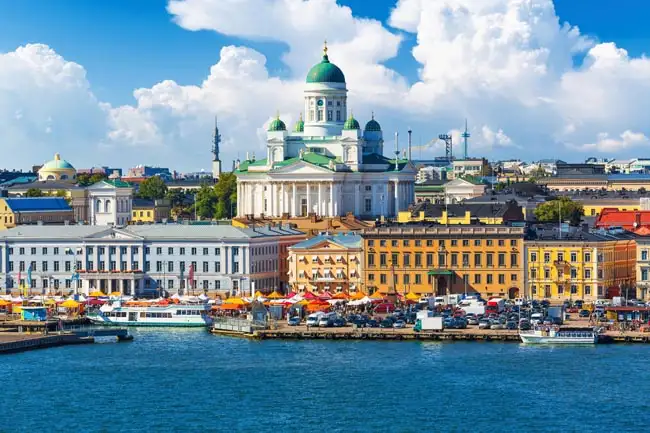
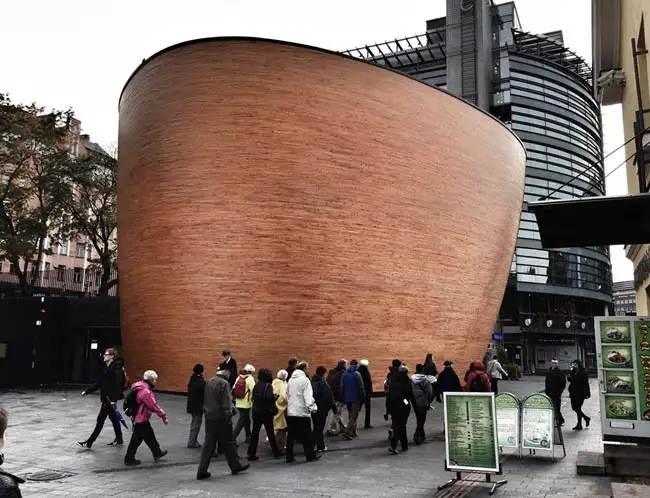
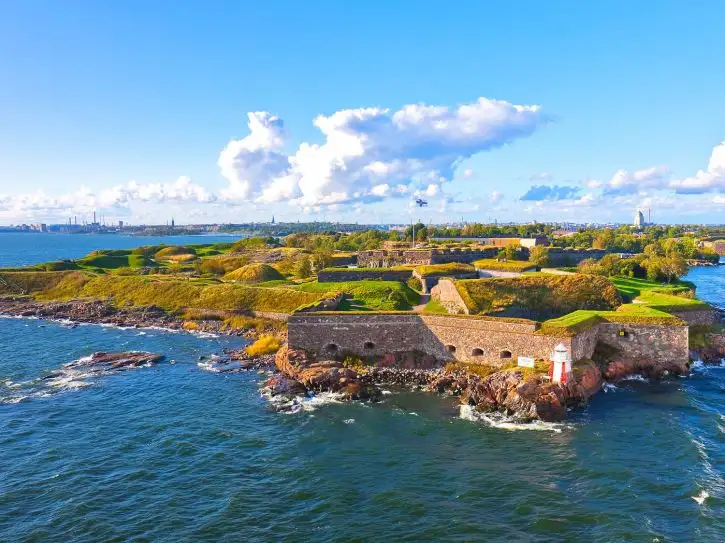
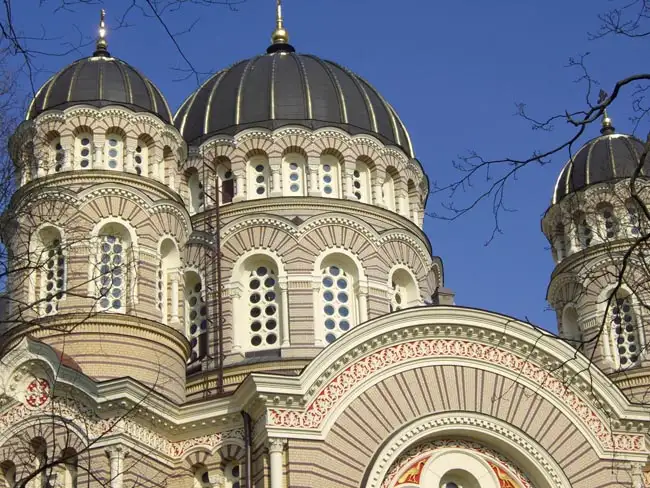

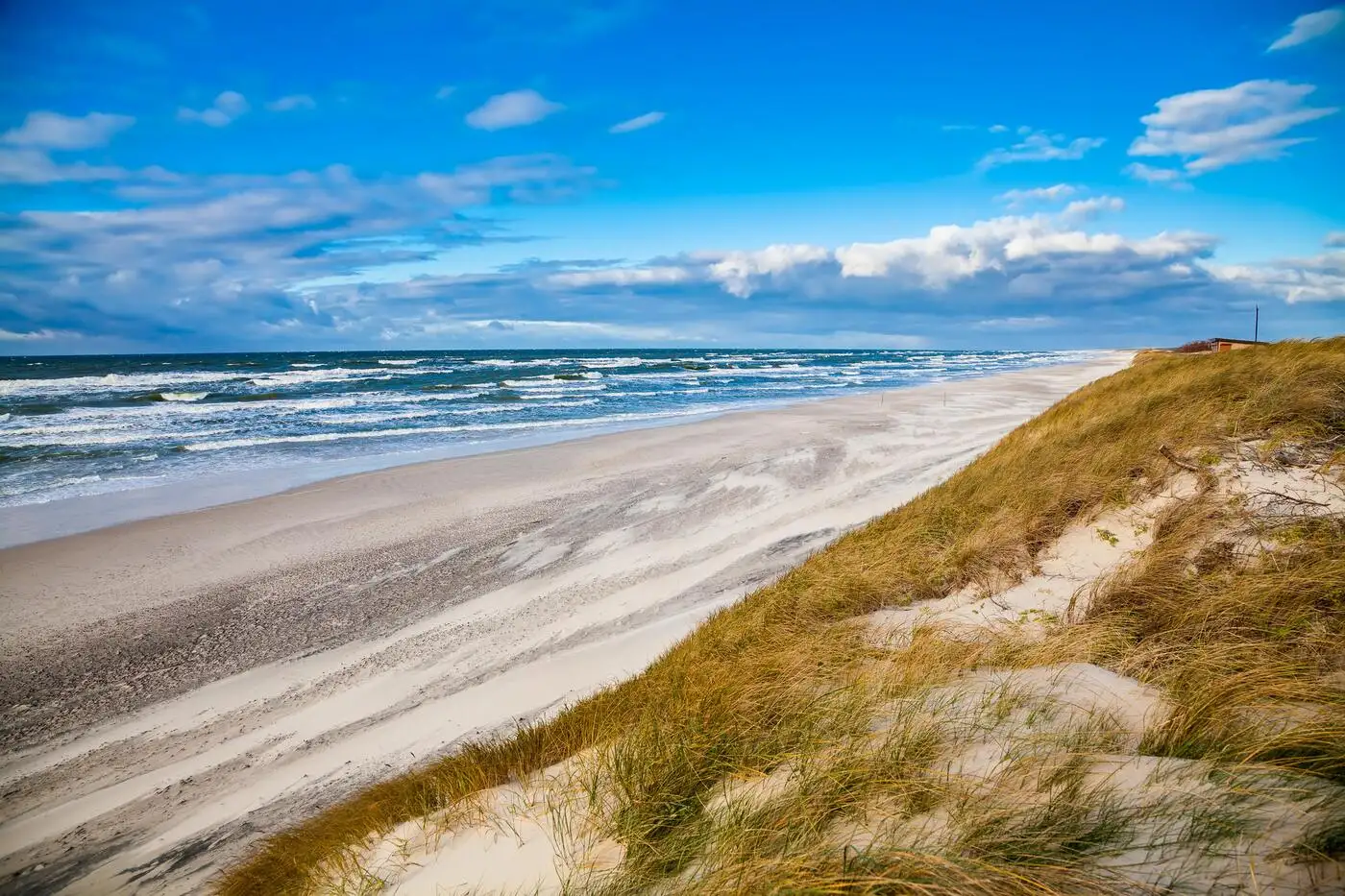
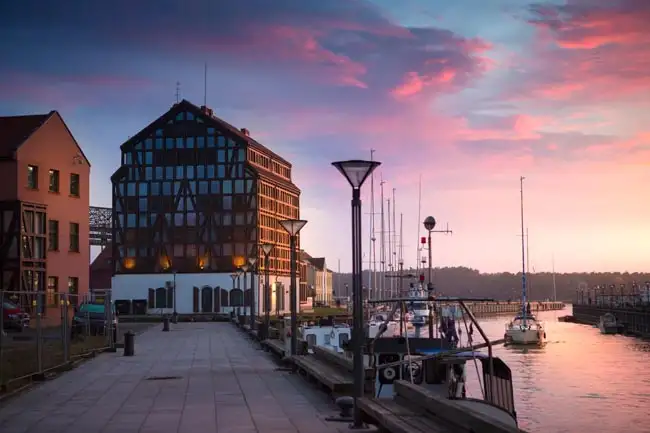
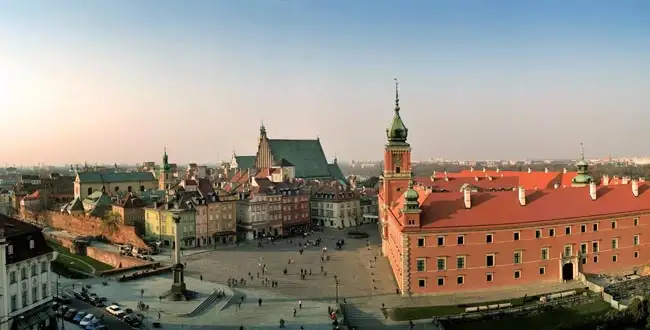
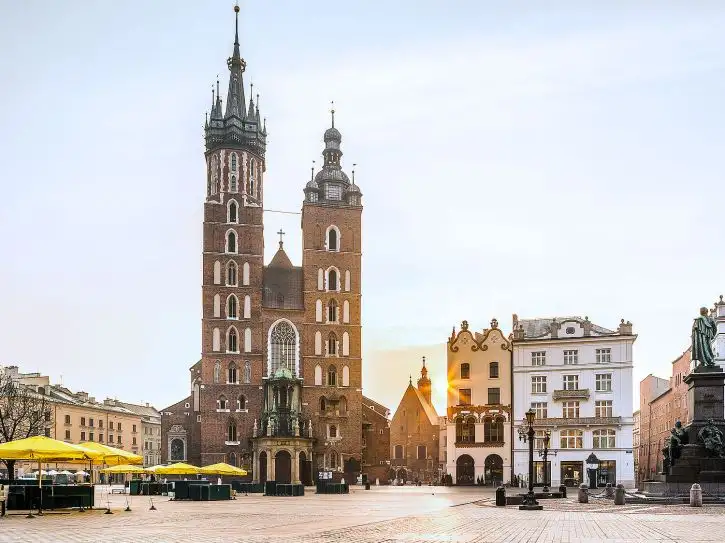
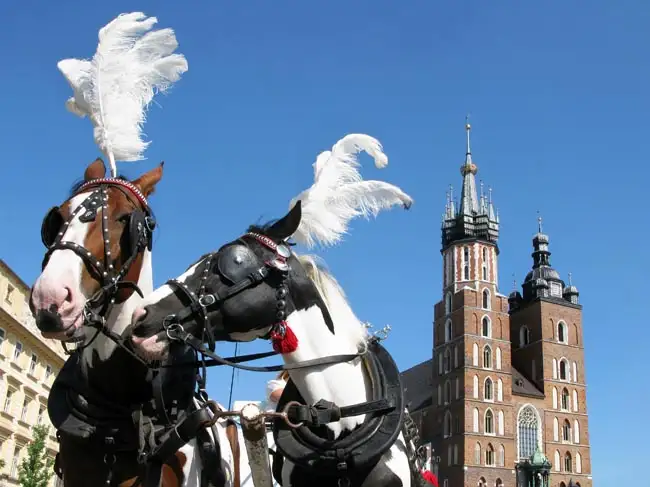

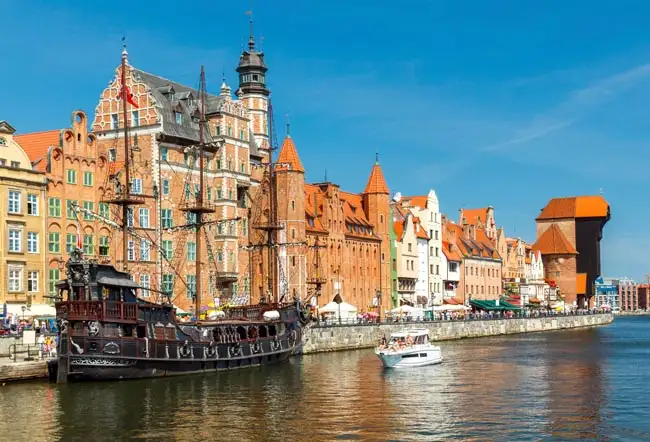

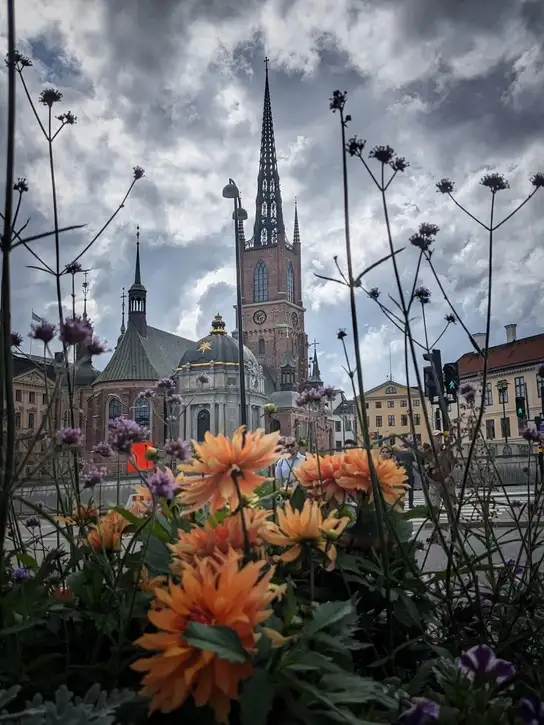
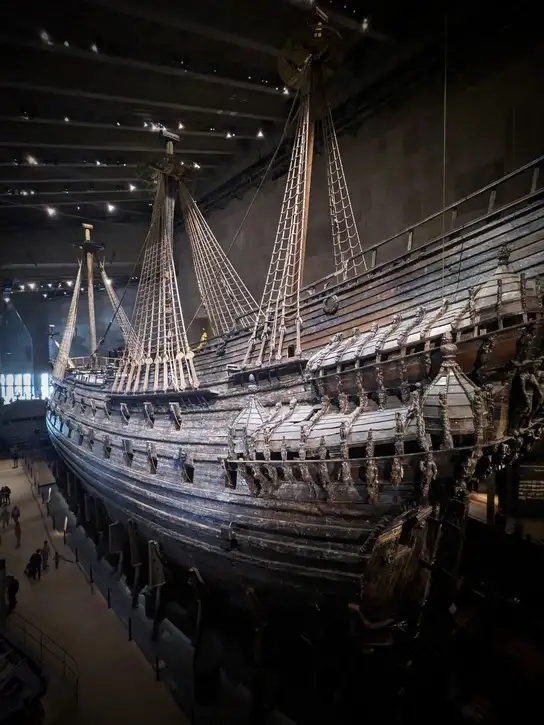
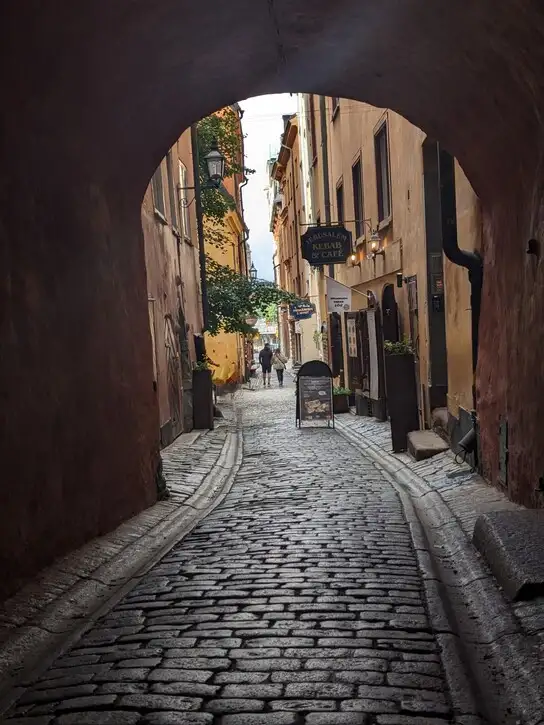
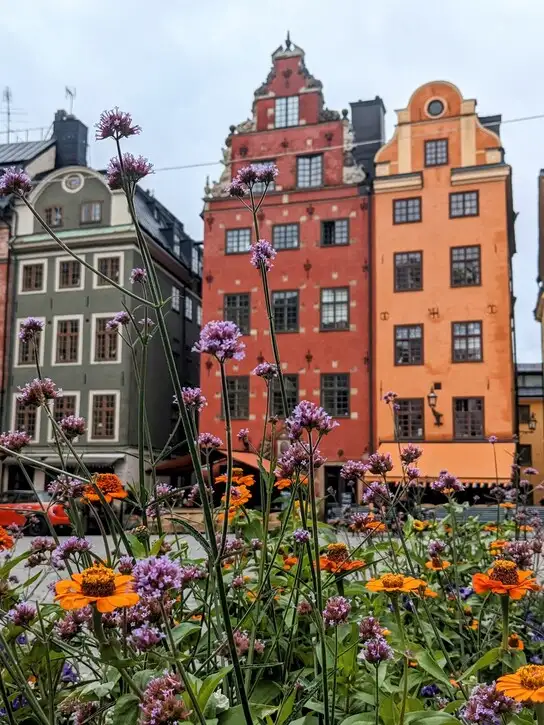
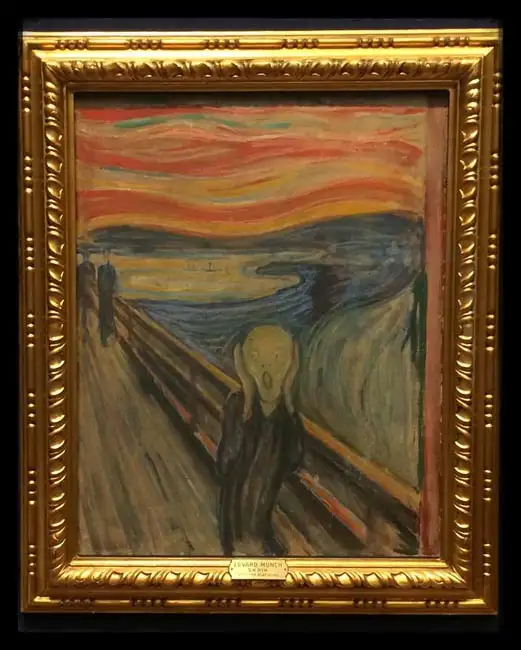
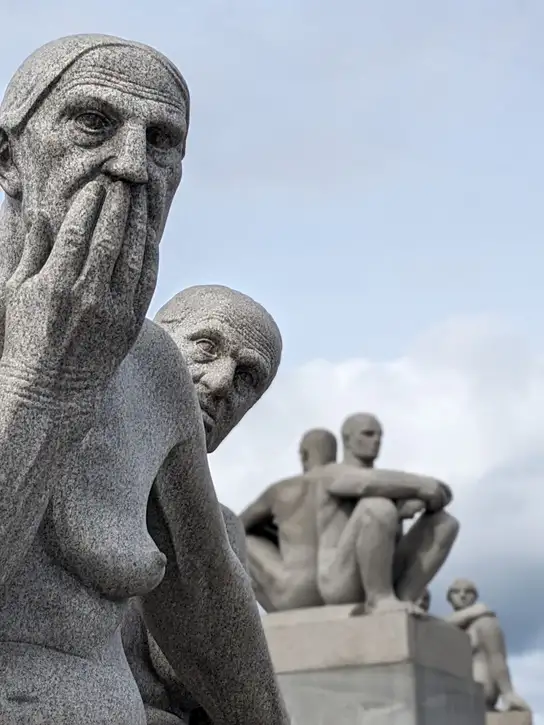

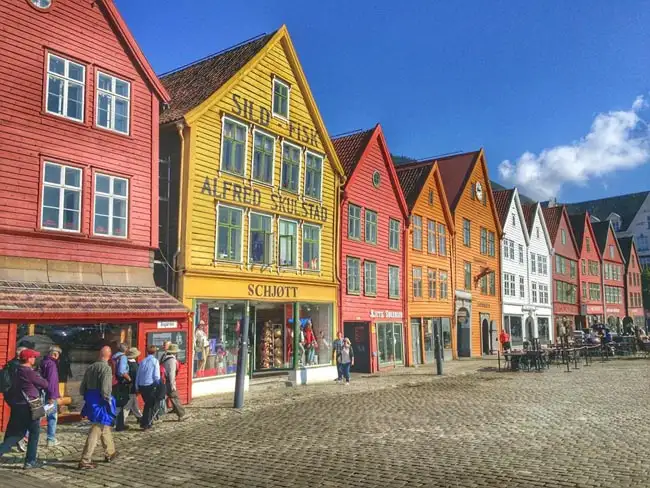

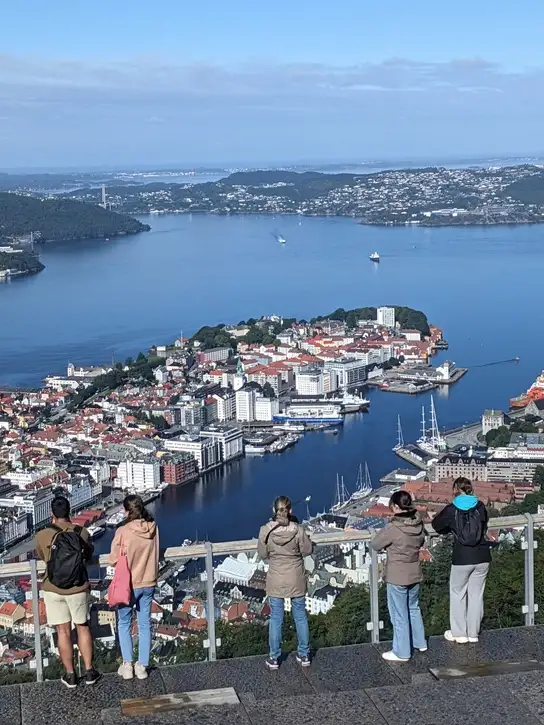
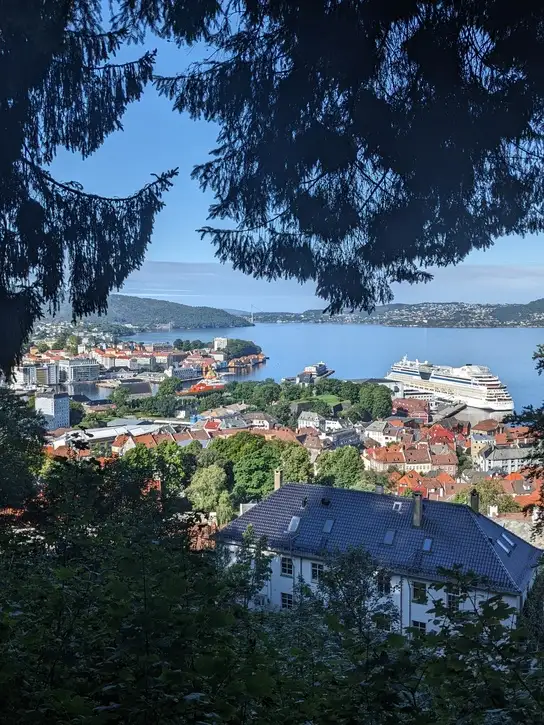
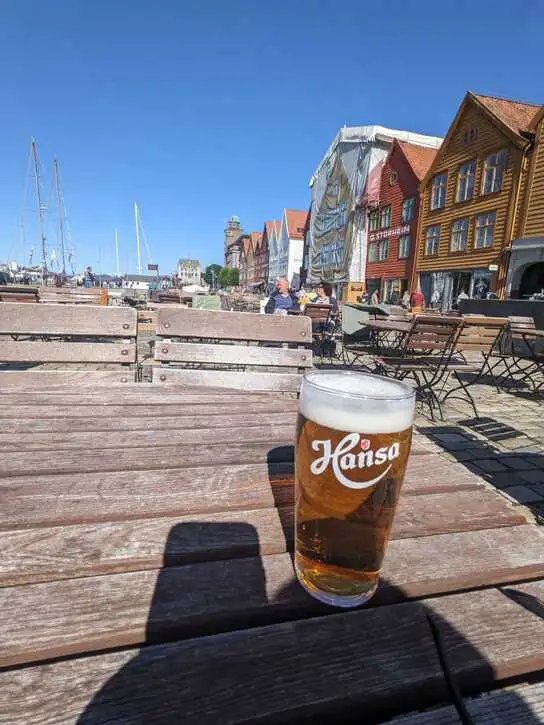
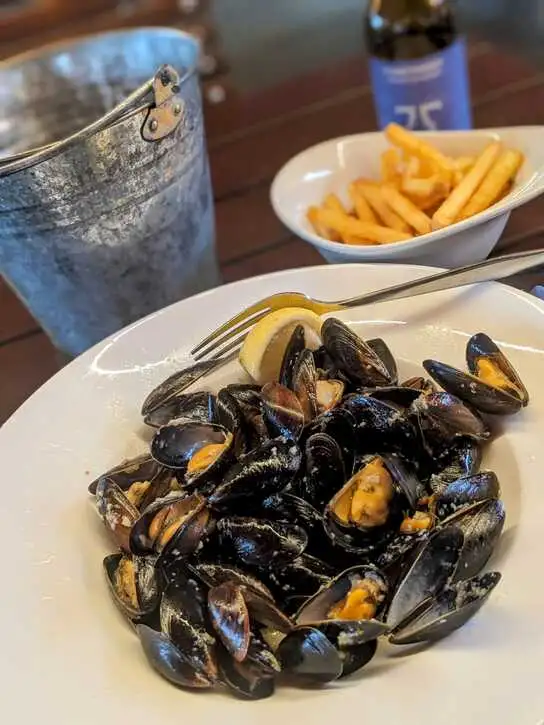
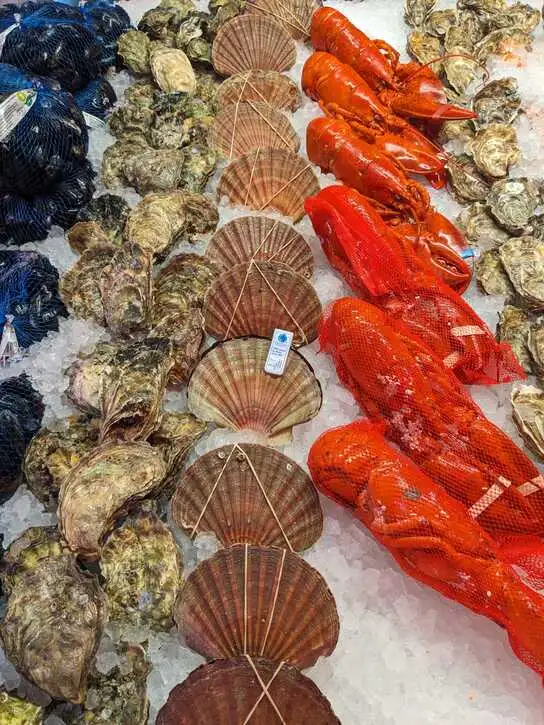
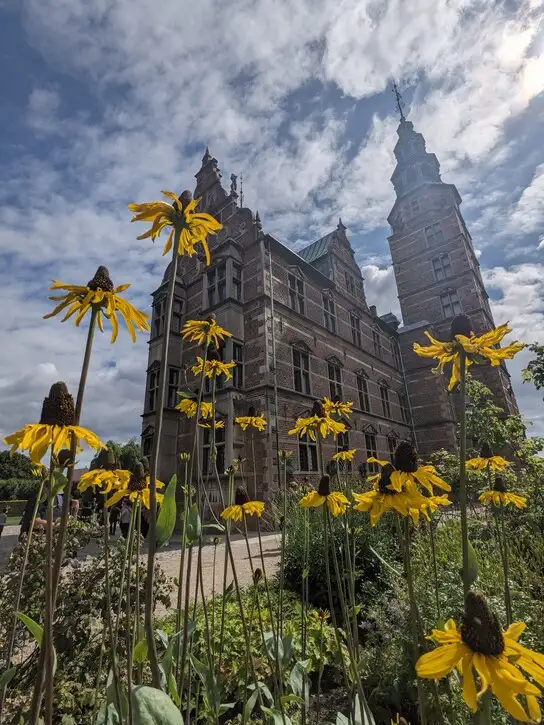
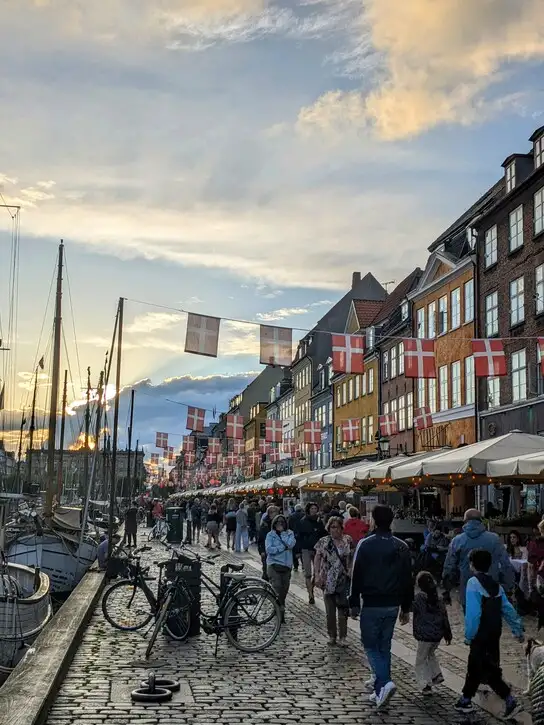


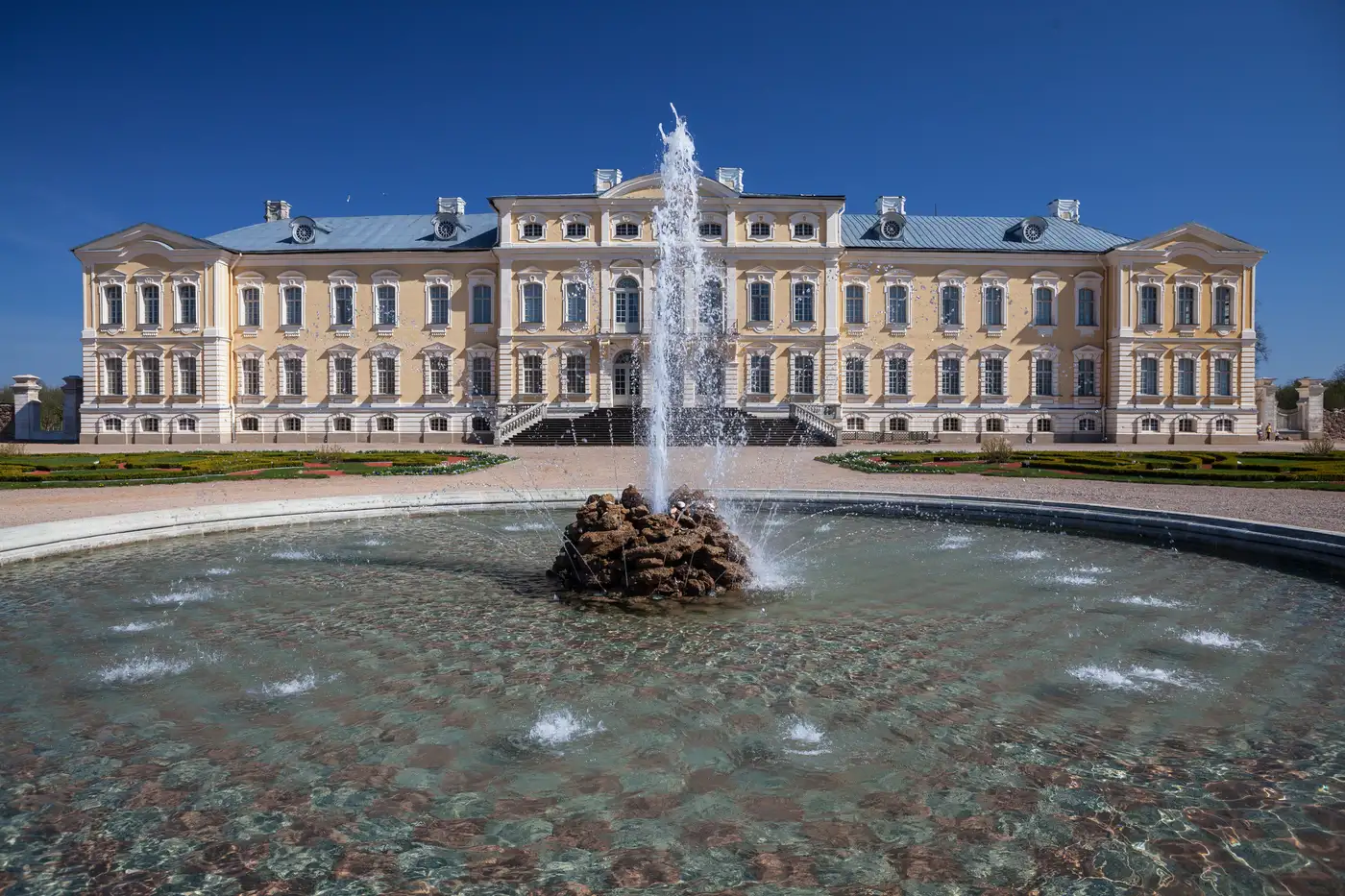
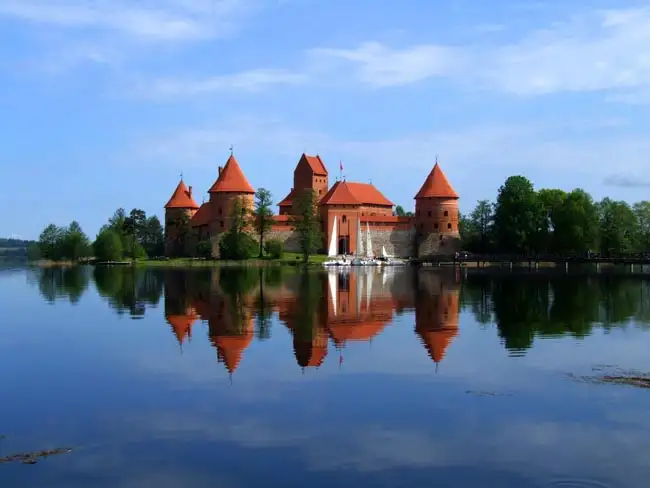

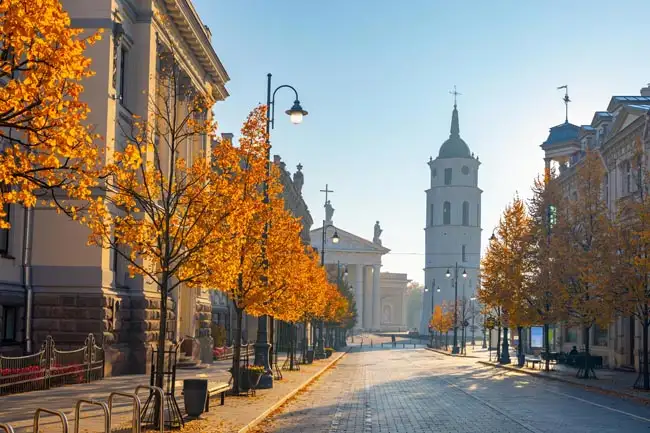
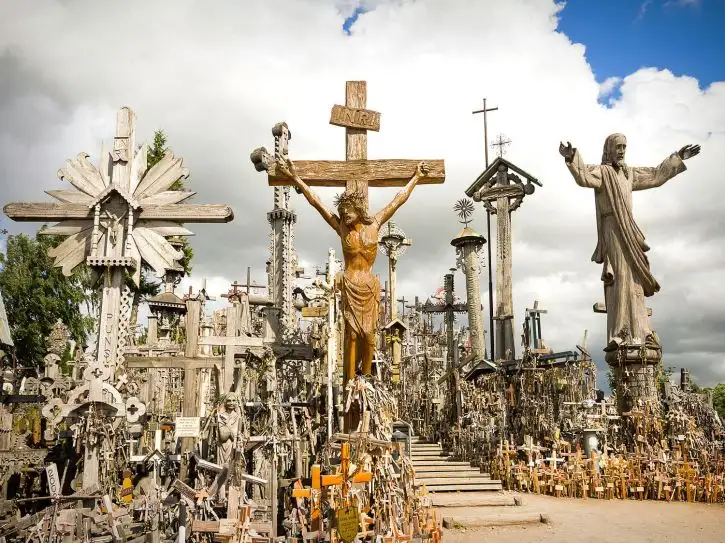
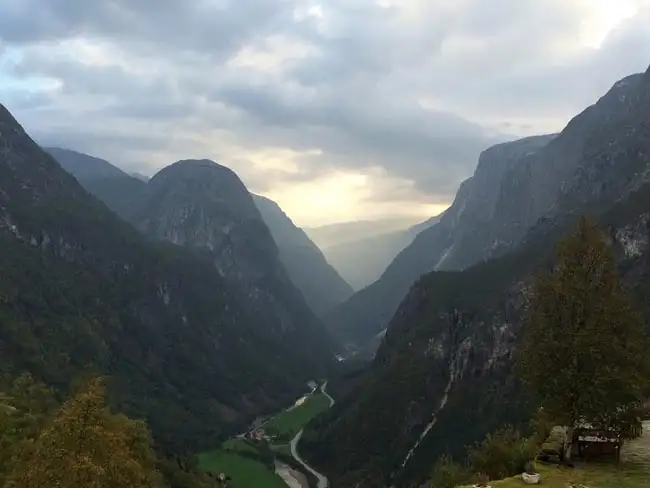
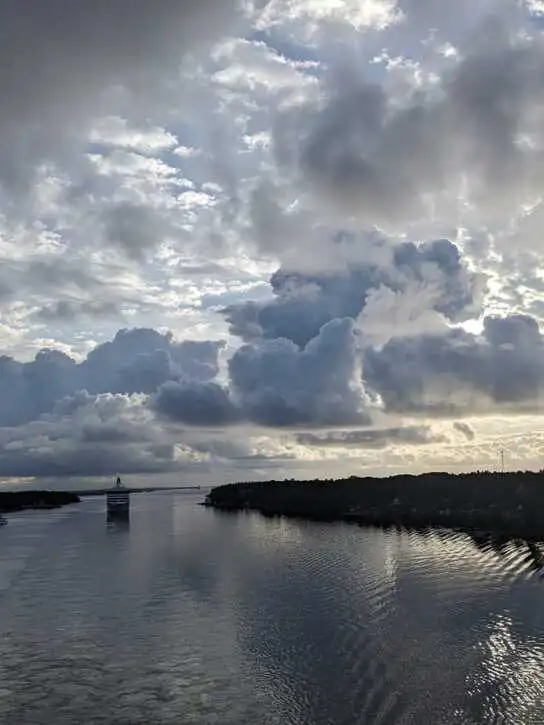
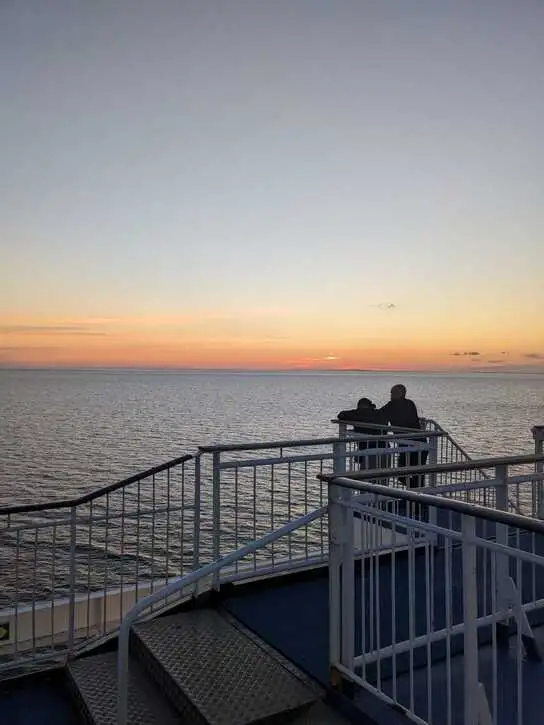

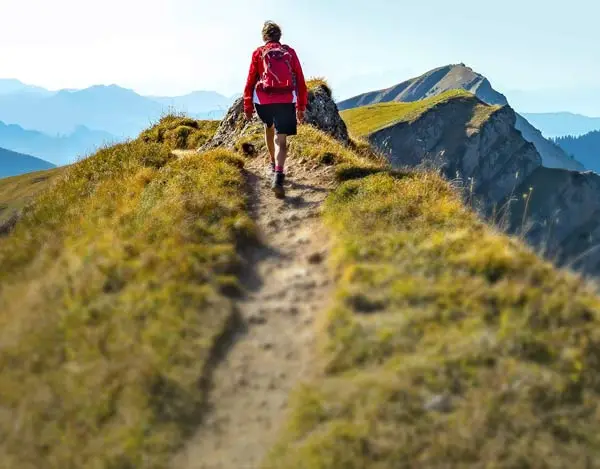
Book This Tour
- Final payment: Due 90 days prior to departure.
- Deposit: A non-refundable $1000 CAD Deposit is required at booking.
- Internal Flight Taxes: An extra $100 CAD applies for taxes and fees on tour flights. The internal airfares are included, but taxes are listed separately as they may change. Exceptions are noted in Red.
- Optional Single Supplement: $3780 CAD (number of singles limited).
(View options forsingle travellers) - Transfering Tour or Date: Transferring to another tour or tour date is only permissible outside of 120 days prior to departure and is subject to a $100 CAD change fee.
(Read our cancellation policy)
Prices below are per person, twin-sharing costs in Canadian Dollars (CAD). Pricing does not include airfare to/from the tour and any applicable taxes.
Frequently Asked Questions
- What is the maximum number of participants on a trip?Most of our tours carry a maximum of 18 participants; some tours (ie hiking tours) top out at 16. In the event that we do not achieve our minimum complement by our 90-day deadline, we may offer group members the option of paying a "small-group surcharge" as an alternative to cancellation. If all group members agree, we will confirm the trip at existing numbers; this surcharge is refundable in the event that we ultimately achieve our regular minimum. If the small group surcharge is not accepted, we will offer a refund of your deposit or a different trip of your choice.
- Can I extend my tour either at the beginning or end? What about stopovers?Yes, you can extend your tour either at the beginning or the end and we can book accommodation in our tour hotel. Stopovers are often permitted, depending on air routing. Stopovers usually carry a "stopover" fee levied by the airline.
- How do I make a reservation? How and when do I pay?The easiest way to make a reservation is via our website; during office hours, you are also more than welcome to contact us by telephone.
A non-refundable deposit is payable at the time of booking; if a reservation is made within 90 days, full payment is required. Some trips require a larger deposit. If international airline bookings require a non-refundable payment in order to secure space or the lowest available fare, we will require an increase in deposit equal to the cost of the ticket(s).
Early enrolment is always encouraged as group size is limited and some trips require greater preparation time.
Once we have received your deposit, we will confirm your space and send you a confirmation package containing your trip itinerary, any visa/travel permit related documents, invoice, clothing and equipment recommendations, general information on your destination(s), and forms for you to complete, sign and return to us. Your air e-tickets (if applicable), final hotel list, final trip itinerary, and instructions on how to join your tour, will be sent approximately 2-3 weeks prior to departure. - What about cancellations, refunds, and transfers?Please review our cancellation policy page for details.
- I am a single who prefers my own room. What is a single supplement?All of our tours have a single supplement for those who want to be guaranteed their own room at each location.
This supplement is a reflection of the fact that most hotels around the world do not discount the regular twin-share rate for a room by 50% for only one person occupying a room. Most hotels will give a break on the price, but usually in the range of 25-30% of the twin-share rate. This difference, multiplied by each night, amounts to the single supplement.
The conventional amount can also vary from country to country and some destinations are more expensive than others for single occupancy. In order to be "single friendly," the supplements we apply are not a profit centre for us and we do our best to keep them as reasonable as possible.
On most tours we limit the number of singles available, not to be punitive, but rather because many hotels allow for only a limited number of singles; some smaller hotels at remote locations also have a limited number of single rooms available.
Please note that most single rooms around the world are smaller than twin-share rooms and will likely have only one bed. - Do you have a shared accommodation program?Yes! If you are single traveller and are willing to share, we will do our best to pair you with a same-gender roommate. Please note that should we fail to pair you, we will absorb the single supplement fee and you will default to a single room at no extra charge.
